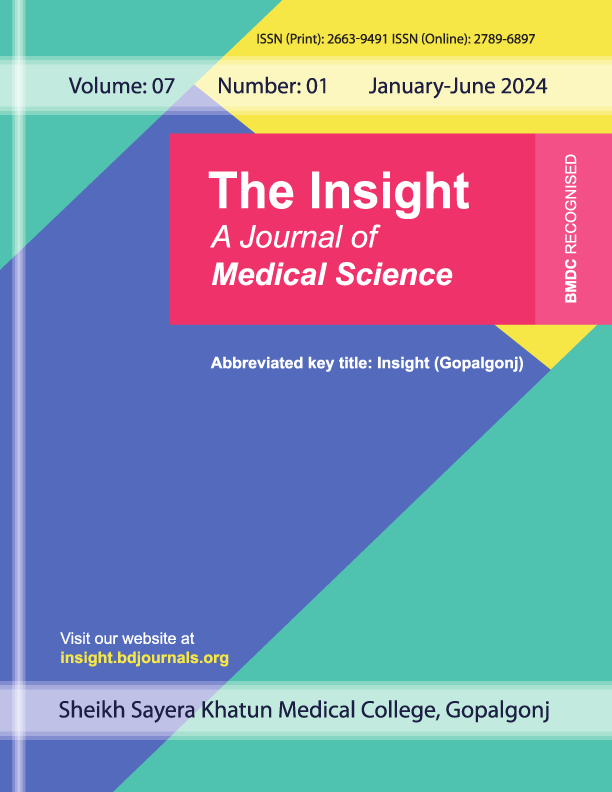Abstract
Introduction: Chronic kidney disease (CKD) is a significant global health problem, affecting around 10% of adults and often leading to end-stage renal disease (ESRD). Glomerulonephritis (GN), the second leading cause of CKD, involves immune-mediated damage to the kidney's glomeruli, causing symptoms like hematuria, proteinuria, and hypertension. Accurate diagnosis, including serum creatinine levels, urine sodium, biomarkers, and ultrasound, is crucial. Kidney biopsies are essential for assessing GN despite risks in advanced stages. Aim of the study: The study aims to correlate renal sonographic parameters with the histopathology of glomerulonephritis. Methods & Materials: This cross-sectional descriptive study was conducted at the Dhaka Medical College Hospital's Department of Nephrology over 18 months, from July 2018 to December 2019, involving 94 renal disease patients selected through purposive sampling. Result: The study population (N=94) had a mean age of 32.16 years (SD ±13.09), with 53.2% aged ≤30 years and 10.6% over 50 years. Gender distribution was nearly equal: 48.9% male and 51.1% female. Most kidney biopsies (97.88%) were performed on the right kidney. Conclusion: The study revealed strong correlations between renal ultrasound findings and histopathological changes in glomerulonephritis patients. Increased cortical echogenicity on ultrasounds was linked to kidney damage indicators, suggesting that non-invasive ultrasound can effectively predict renal tissue damage, aiding early diagnosis and monitoring of disease progression.

This work is licensed under a Creative Commons Attribution 4.0 International License.
Copyright (c) 2024 The Insight


 PDF
PDF